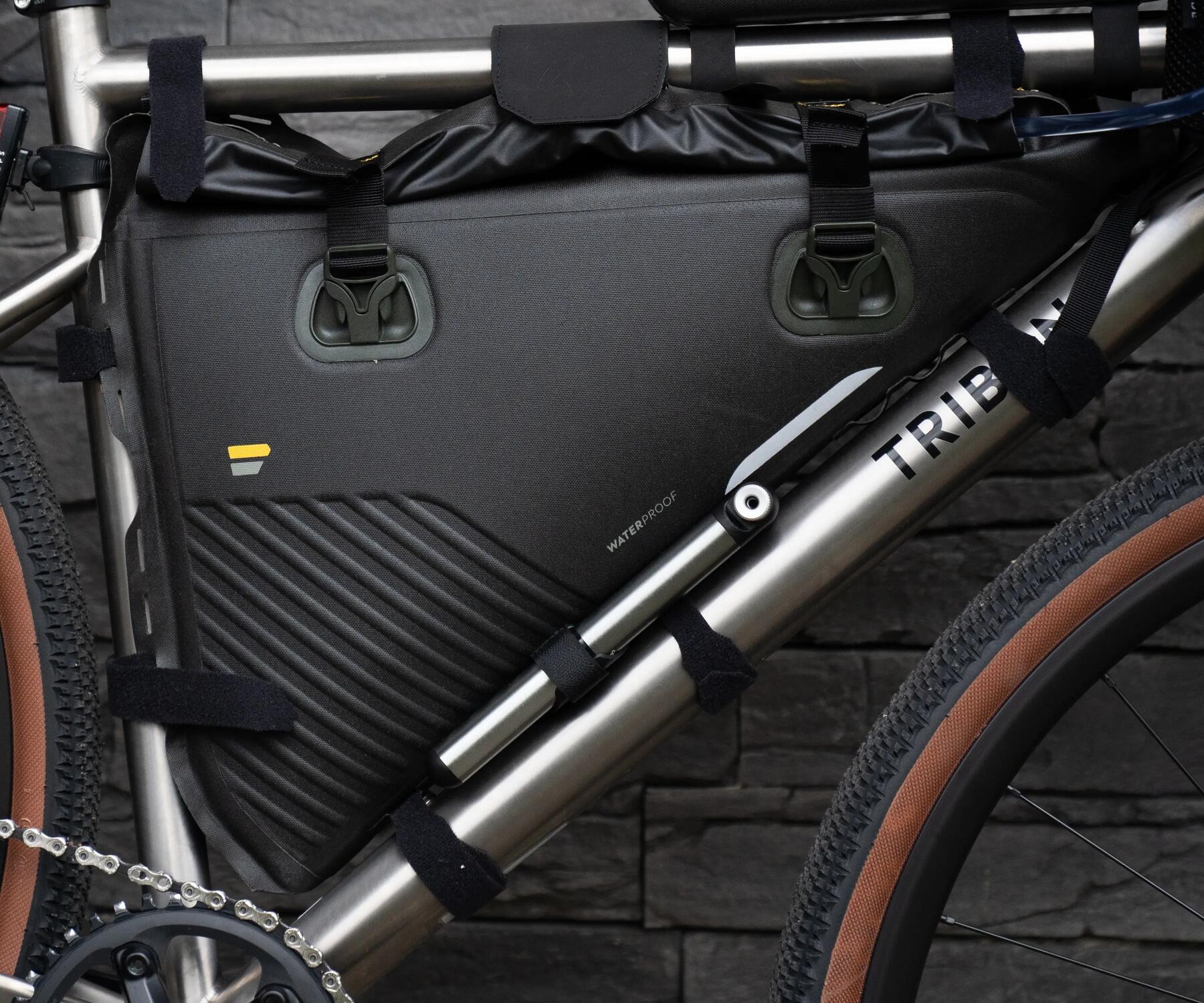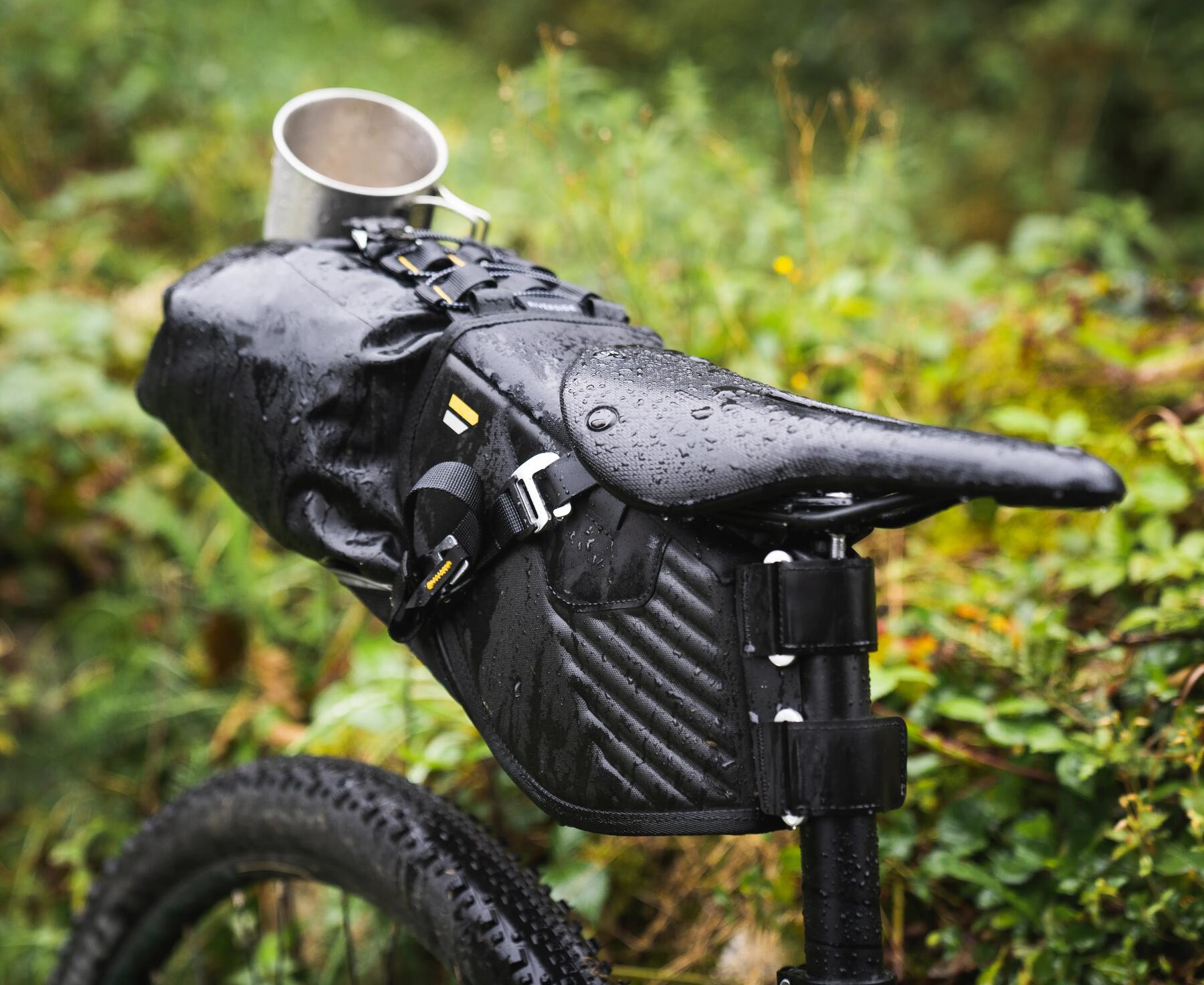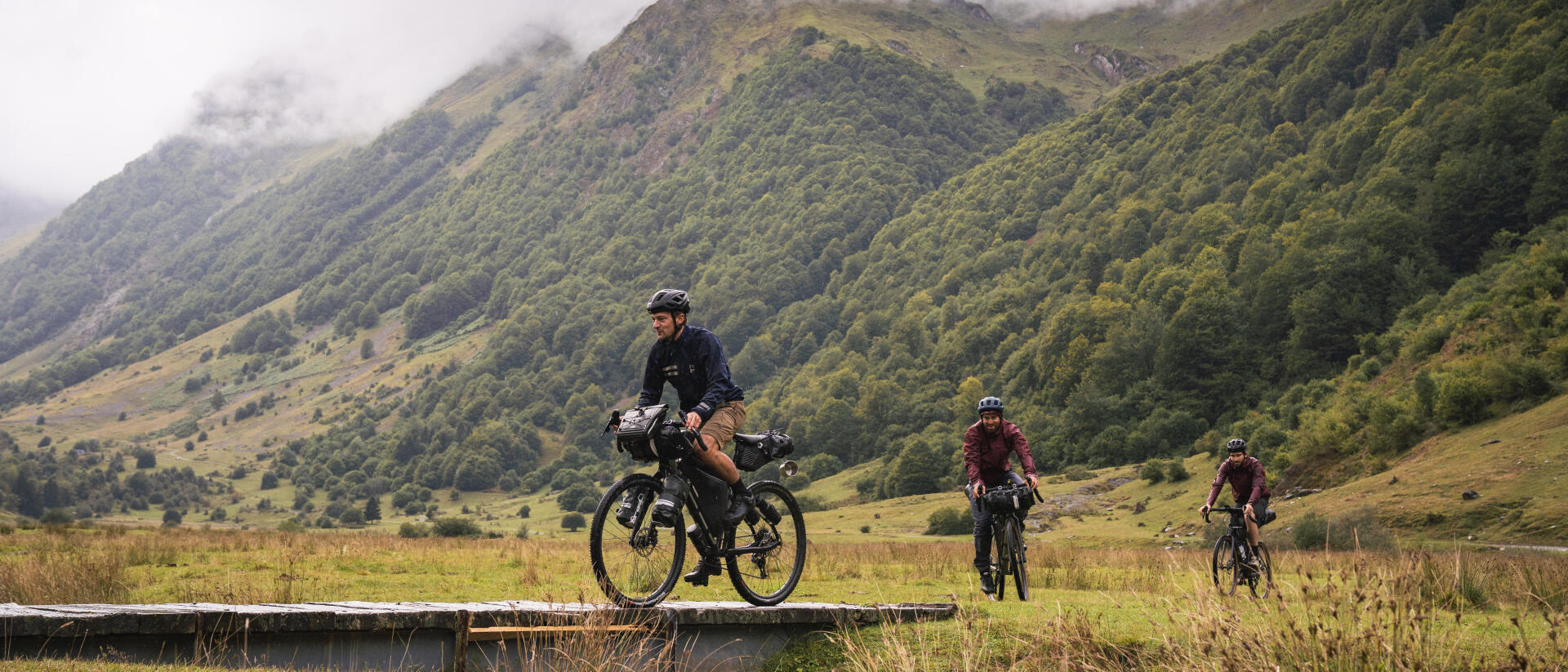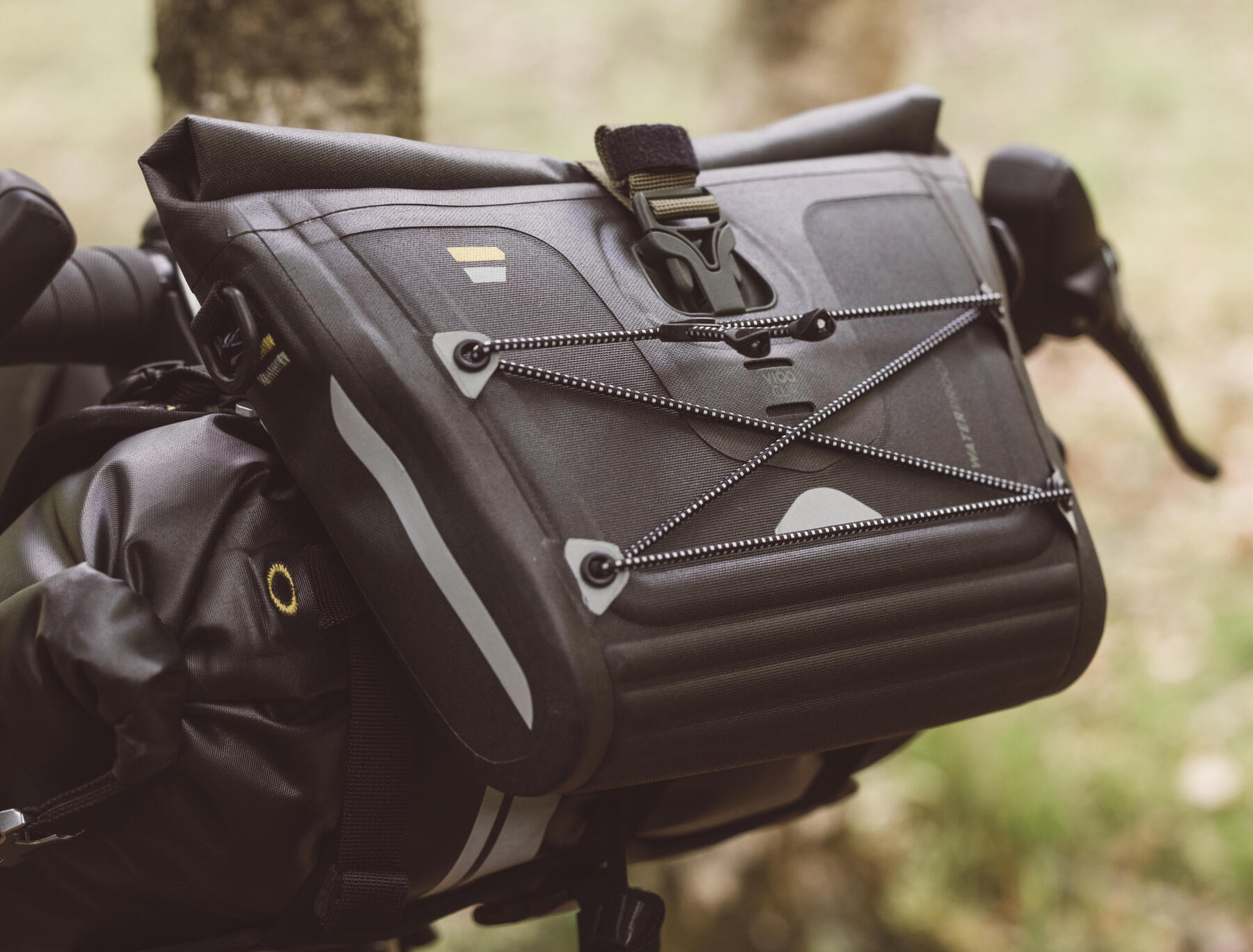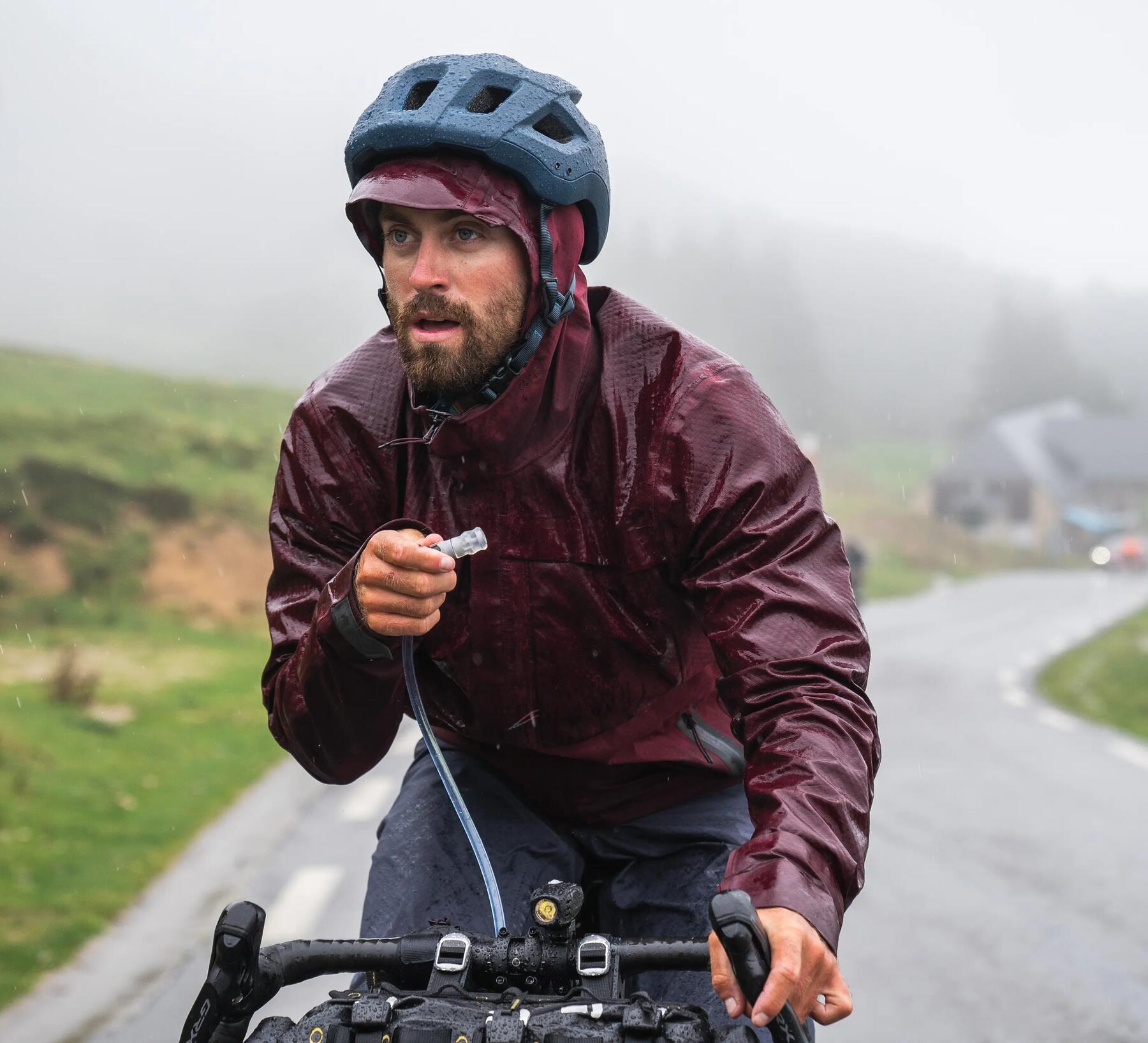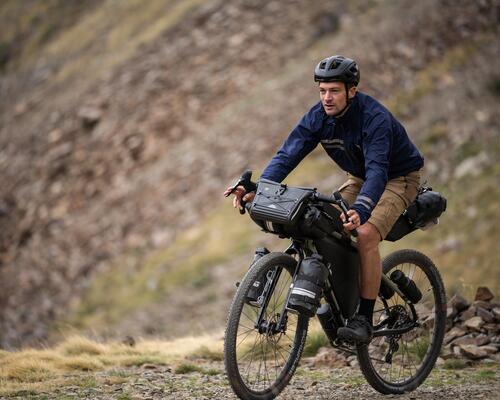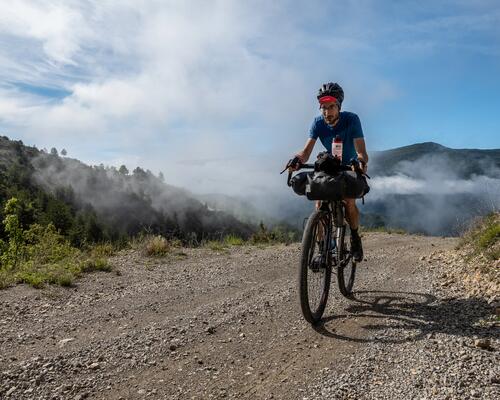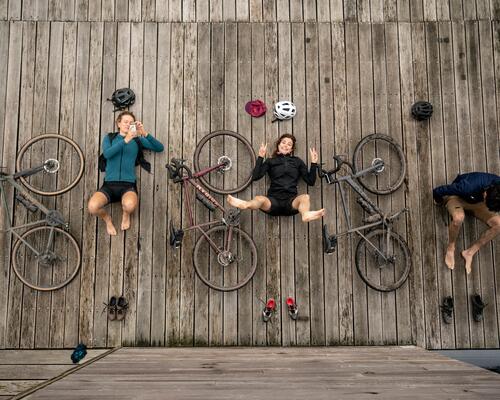1/ Which bike should you take bikepacking?
Before kitting out your bike for bikepacking, let's do a quick recap of the type of bike to choose for this kind of adventure. Your bike will be carrying around 10 to 20 kg of extra weight, so we can rule out carbon straight away. Pick a steel or titanium bike, or even an aluminium one.
Above all, pick a comfortable bike that won't cause you any pain or discomfort. Ideally, use a bike that you're used to riding, or that you've had time to train on. People generally use road handlebars so that they can vary their back, neck and shoulder position.
Once you've picked your bike, it's time to kit it out with bags!
Bikepacking bags have limited storage space, so it's important to keep everything neat and tidy inside your bags. Let's take a look at where to put which items, and which equipment is an absolute must.

